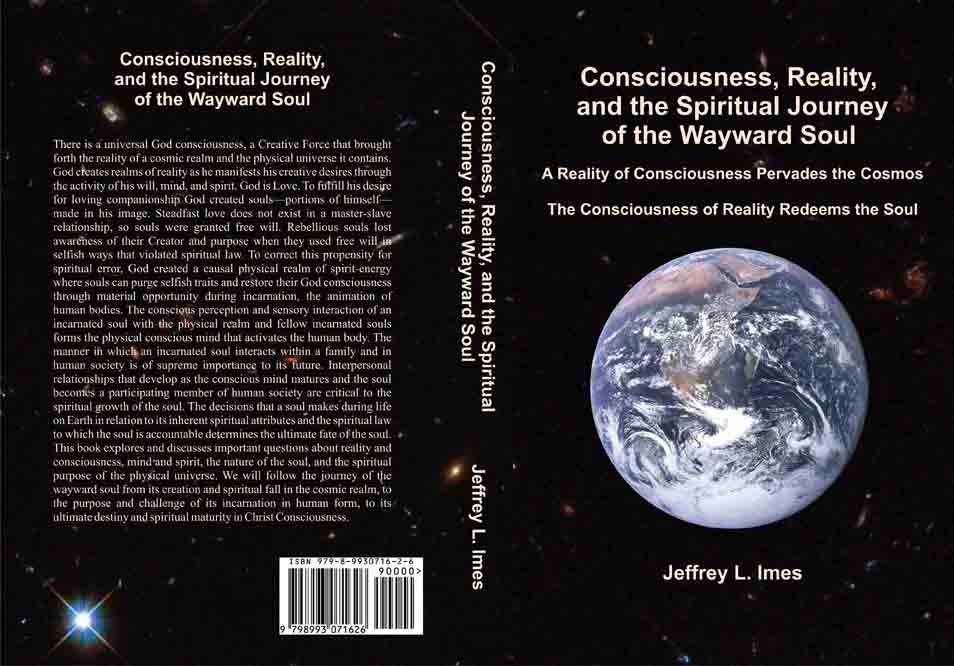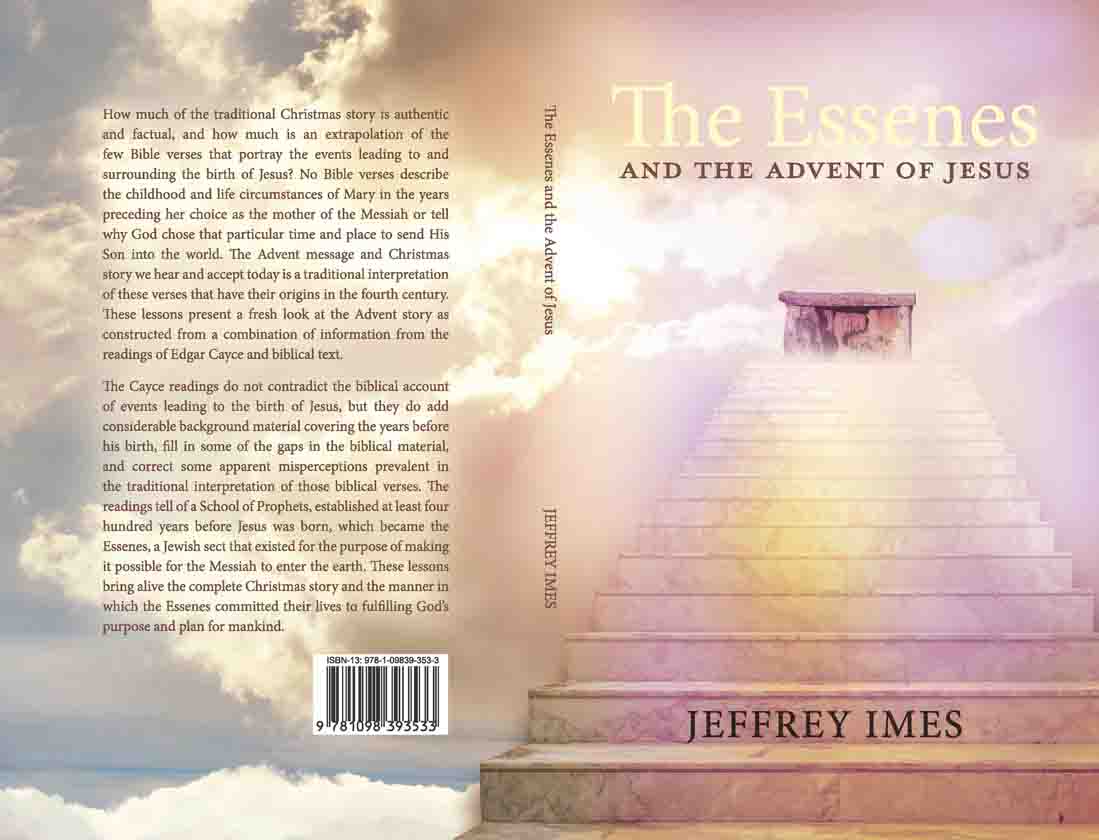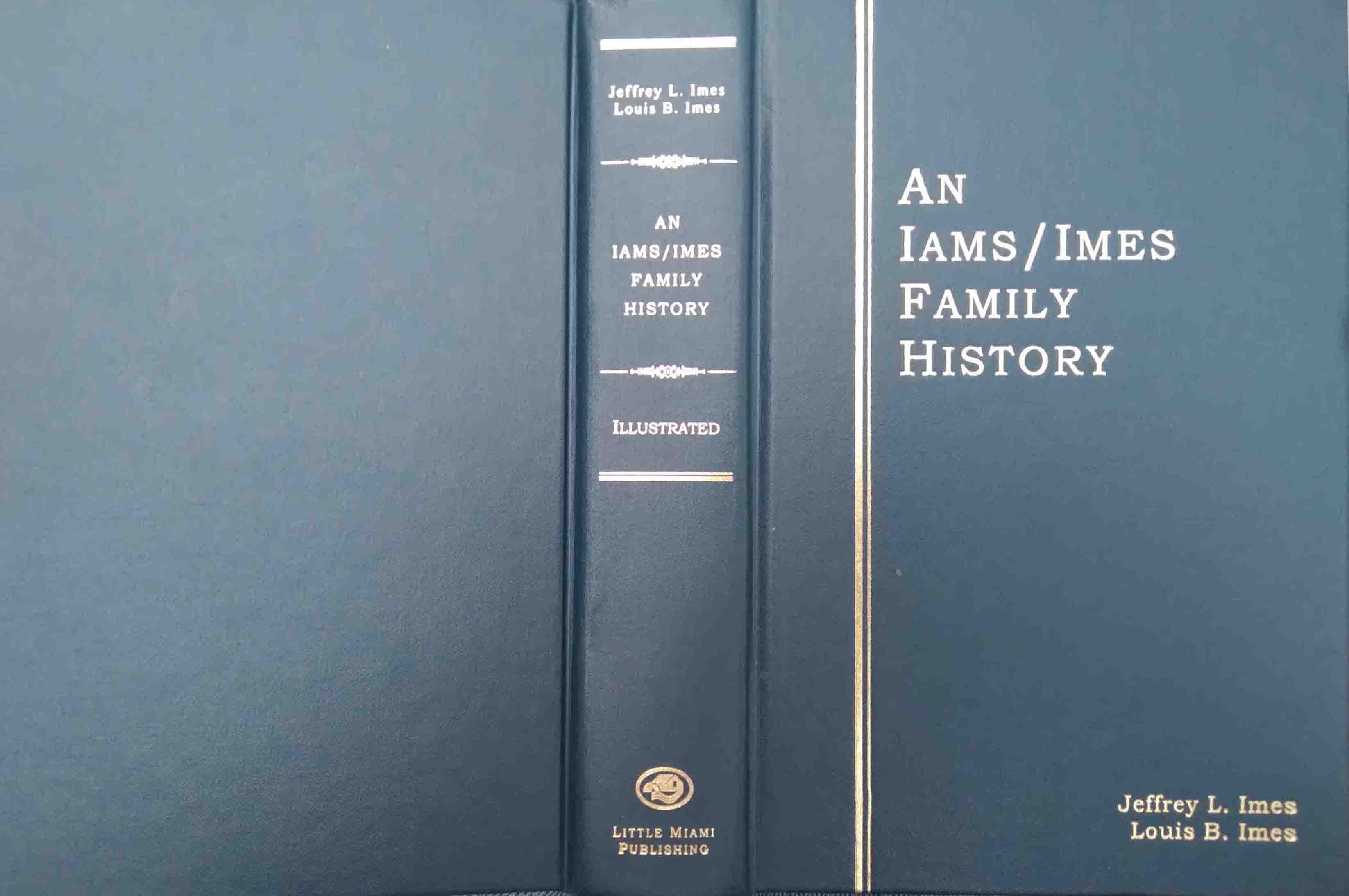-- Books for Sale by Jeffrey Imes --
These books (apart from the geneaology book) discuss several topics related to the plight of humanity and the human condition from the perspective of spirituality, religion, and metaphysics. They emphasize that fact that behind every human being is a soul that is seeking to reawaken its awareness of God and fulfill its purpose and destiny to be a loving companion of God. The daily struggles of the individuals that make up human society, their loving and hateful reactions and interactions, the goodness they project and the spitefulness they display, are not simply human traits, but are material projections of the spiritual state of the souls that animate each person. The condition of the soul mind, whether it delights in remaining aligned with and attuned to the Mind of God, or is happy to dwell in a condition of self-centeredness, self-indulgence, and self-gratification, determines whether it builds peace and harmony or discord and chaos in the world.
Each person alive in the world is here to demonstrate the nature of their soul, their understanding of God and spiritual law, and the values that they desire to represent to God and other souls in the world. There is more to life than living and more to death than dying. The soul is of paramount importance and each individual is responsible for reordering and redirecting their will to guide their mind and thoughts toward a more spiritual and loving life. In this way we open the door that lets God, as the Christ Spirit, into our hearts and minds. In faith and in time, this new way of thinking and acting restores us to our rightful place as soul children of God and companions of the Almighty. I hope you enjoy studying and exploring the ideas presented in these books.
Questions or Comments? Email to: jimescayce@gmail.com
Consciousness, Reality, and the Spiritual Journey of the Wayward Soul
A Reality of Consciousness Pervades the Cosmos
The Consciousness of Reality Redeems the Soul

This book is scheduled for release by Amazon and other booksellers on 20 Jan 2026.
- Ebooks are available now for preorder at Amazon.
Description:
There is a soul animating every human being, and the purpose of every soul is to be a companion of God. This book explores the origin and nature of the soul and explains how the misuse of free will led souls to a loss of God consciousness and the knowledge of their spiritual purpose. The journey of the wayward soul is presented in an orderly fashion from its creation and spiritual fall in the cosmic realm through its descent into the physical realm and its struggle to remember and rediscover its spiritual purpose. There is a universal God consciousness, a Creative Force that brought forth the reality of a cosmic realm and the physical universe it contains. God is Love, and love is satisfied in caring, respectful relationships between rational beings capable of expressing emotions. God desired companionship, and to fulfill that desire he created beings, portions of himself, that we call souls. Each soul was endowed with the ability to create through the activity of its free will and mind. It was necessary for each soul to have free will, be independent and capable of thinking and acting for itself, because love does not truly exist in a master-slave relationship. Souls have the ability to become as close to God as they desire, and are separated from God only by misuse of their free will to indulge in self-centered behavior that belittles and denigrates their spiritual nature and origin. Through inappropriate exercise of free will in ways that violated the spiritual law to which they are accountable, souls lost awareness of their Creator and purpose to be companions of God. To correct this propensity for spiritual error and ultimately reunite souls with God, God created a physical rehabilitation facility where souls can meet their shortcomings through material opportunities, so that they can purge their selfish traits and restore God consciousness. This is accomplished during incarnation, the animation of human bodies.
Souls are our true selves, and all human activity on Earth is guided by the manifested thoughts and desires of a soul. The conscious perception and sensory interaction of an incarnated soul with the physical realm and fellow incarnated souls forms the physical conscious mind, the portion of a soul mind that activates the human body. The manner in which an incarnated soul interacts within a family, community, and human society in general is of supreme importance to its spiritual future. Interpersonal relationships that develop as the conscious mind matures and the soul becomes a participating member of human society are critical to the spiritual growth of the soul. The decisions that a soul makes during life on Earth in relation to its inherent spiritual attributes and spiritual law, determines the ultimate fate of the soul. This book explores and discusses important questions about reality and consciousness, how the human
mind works, and the relation between the conscious mind and other aspects of the soul mind. It discusses the relation between mind and spirit, and the way in which the soul can use the material world and interpersonal relationships to recover the memory of its spiritual purpose. It tells how we can alter our thinking and activity in a way that repatterns the mind to be receptive to the inner presence of God, gain spiritual maturity in Christ Consciousness, and fulfill our soul's ultimate destiny as a loving companion of God.
Hence the necessity of their development to pass through flesh and manifest in the earth plane that development attained in the soul's journey through the spheres, and to the final relation with the Creator.
[Edgar Cayce reading 137-6]
The Spiritual Purpose of the Physical Universe
As Revealed by Science and the Edgar Cayce Readings

Available in Paperback at Amazon and BookBaby
Description:
The interface of science and religion as it pertains to the creation of the universe and the nature of the soul is a fascinating field of investigation. The author published The Spiritual Purpose of the Physical Universe as a way to order and correlate the ideas from readings that touched upon the creation of the universe as a facility for the rehabilitation of souls that had lost God consciousness with scientific studies in the fields of cosmology and archaeology. The book brings about a better understanding of the connection between science and religion, the relationship between man and God, and the true spiritual purpose of the universe in which we reside. Scientists and religious leaders too often hold each other at arm's length. Physicists strive to understand the forces that drive the evolution of the universe from the original mix of energy and subatomic particles to the atoms and elements that form matter, planets, solar systems, and galaxies. Biologists seek to unravel the secrets hidden in the miracle of life that blossoms and flourishes on the earth and to discover the nature of mind and its connection to the body. Scientific investigations can't cross the invisible barrier that separates the physical and spiritual worlds because scientific equipment and experiments operate only in the physical realm, and are constrained by the physical laws that control the behavior of matter and energy.
Religious leaders too often refuse to acknowledge the truth of scientific discoveries and theories that, in their minds, conflict with spiritual concepts such as the existence of God and the soul. This refusal to accept scientific truths extends to concocting various formulations of biblical science
from literal interpretations of the Bible to counter imagined dangers from secular science. This manmade tension between the physical and spiritual worlds is artificial and unnatural. Science and religion are fully compatible and will eventually converge on the truth about the nature of the universe and the purpose of human life. The strongly Christocentric spiritual philosophy of the Edgar Cayce readings encompasses various religious ideas and brings science and religious thought together as a unified whole. Perhaps this book will help dissolve some of the mental barriers that prevent the union of science and religion.
Science and religion are one when their purposes are one.
[Edgar Cayce reading 5023-2]
Chapter Preview: Souls - Portions of God
Chapter Preview: Soul Incarnation and the Rise of Man
The Essenes and the Advent of Jesus
A study guide for the Advent season based on the Holy Bible and Edgar Cayce Readings

Available in Paperback and as an Ebook at Amazon and other Book Distributers.
Description:
The Essenes and the Advent of Jesus is an inspiring eight-lesson Bible study for the Advent and Christmas season that explores the events and intense spiritual preparation that led to the birth of Jesus the Christ. This study guide, rooted in Scripture and enriched by insights from the readings of the Christian psychic Edgar Cayce, integrates the traditional story of the birth of Jesus with unique and invaluable background material extracted from the readings. It presents a richer Bible interpretation that fills in some of the historical gaps in the Advent story, and corrects some misperceptions prevalent in the traditional interpretation of the few biblical verses that tell the story. It reveals the hidden spiritual context surrounding the Immaculate Conception and the coming of the Messiah.
The Christmas story actually begins some four hundred years before the birth of Jesus with the formation of a School of Prophets at Mount Carmel by the prophet Elijah. This school became the center of a religious Jewish sect called the Essenes, who dedicated their lives to preparing for this divine event. The Essenes, known as the compilers and keepers of the Dead Sea scrolls, lived lives of purity and dedication, guided by prophecy and spiritual discipline. They provided for the education and protection of Mary, ensuring that she was spiritually, mentally, and physically ready for her sacred role. The Essene community educated Jesus during his childhood and saw that he was given a higher education in spiritual matters as a young adult.
Each of the eight lessons in this Bible study focuses on a key event or figure involved in the Advent and birth of Jesus, integrating relevant Bible verses, inspired insights from the Cayce readings, and discussion questions designed to deepen understanding and encourage personal reflection. The study guide is perfect for individual or group Bible study, inviting readers to rediscover the Advent season as the Essenes once did—through preparation, prophecy, and spiritual awakening—and shedding new light on the eternal mystery of the birth of Jesus.
Thus in Carmel - where there were the priests of this faith [Essenes] - there were the maidens chosen that were dedicated to this purpose, this office, this service. Among them was Mary, the beloved, the chosen one; and she, as had been foretold, was chosen as the channel. Thus she was separated and kept in the closer associations with and in the care or charge of this office. That was the beginning; that was the foundation of what ye term the Church.
[Edgar Cayce Reading 5749-7]
An Iams/Imes Family History

Purchase this book at Little Miami Publishing
Description:
This collection of genealogical information and historical sketches is a record of the Iams/Imes family that entered Lawrence County, Ohio in about 1810. The original surname of that family was Iams, but by the mid-1800s all of the family had changed their surname to Imes. The colonial ancestors of the vast majority of Imes and associated families of variant spellings (Iiams/Ijams/Iams/etc) in America descend from William Iiams and Elizabeth (Cheney) Iiams of Anne Arundel County, Maryland. The authors have not been able to link the Imes families of Lawrence County, Ohio, to descendants of William and Elizabeth (Cheney) Iiams because, as told by oral tradition, the family traveled down the east coast of Atlantic seaboard to the Carolinas in search of good land then turned toward north the Ohio lands. The patriarch died and was buried on the trail northward and his name is now lost to his living descendants. The mother, three sons and one sister arrived in Ohio in 1810.
Any attempt to reconstruct the past using records that are widely separated in time and space, often incomplete and prone to errors of memory and the sometimes poor educational backgrounds of recorders and their subjects, is fraught with peril. The authors have talked to dozens of individuals, and sifted through hundreds of documents and thousands of recorded names to compile the family records presented herein. While much of the material compiled in these family histories was derived from old government and newspaper records, a significant part comes from the personal remembrances of family members. Memories fade in time, but often, even after the details are gone, enough facts are often retained to provide clues to the researcher. As more state, county and federal records are photographed and compiled into online databases, other researchers will be able to study those records to fill in the inevitable gaps and omissions and correct the errors in the data recorded in this book and publish a revised edition. It is hoped that the material published herein will be useful to these future Imes family genealogists as a foundation for further research.
